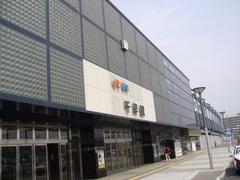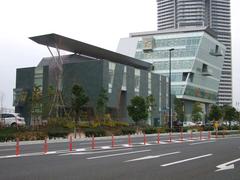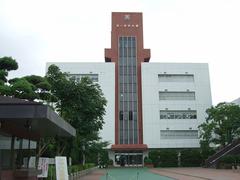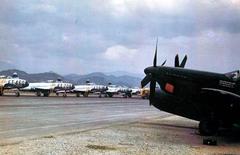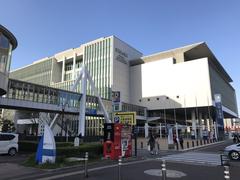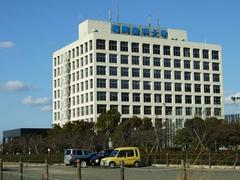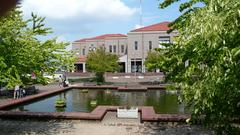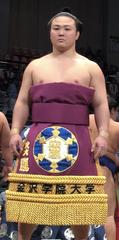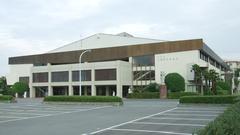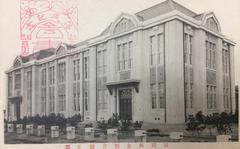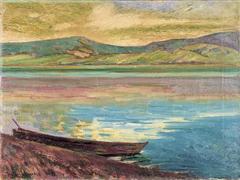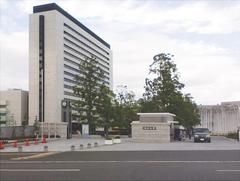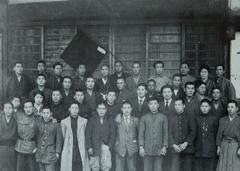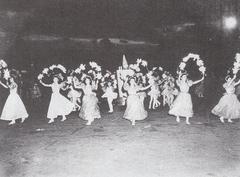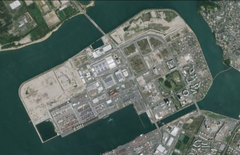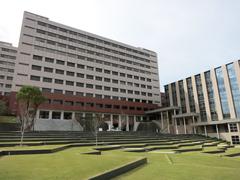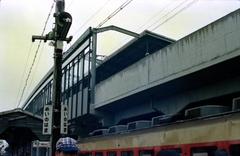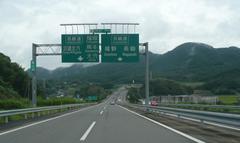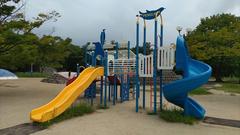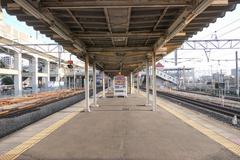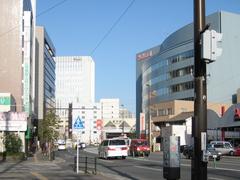Tochoji Temple Visiting Hours, Tickets, and Comprehensive Visitor Guide: Exploring Fukuoka’s Historical Landmarks
Date: 04/07/2025
Introduction
Fukuoka, located in southwestern Japan, is a city celebrated for its vibrant culture and deep historical roots. Among its most notable spiritual landmarks are Tochoji Temple and the Fukuoka Japan Temple. Each site offers unique insights into the city’s religious diversity, architectural excellence, and centuries-old traditions. This guide provides everything you need to know for a memorable visit, including historical context, architectural highlights, visitor information, accessibility, seasonal events, and travel tips (travelsetu.com; crossroadfukuoka.jp).
Table of Contents
- Introduction
- Tochoji Temple: History, Significance & Visitor Guide
- Fukuoka Japan Temple: Modern Spiritual Landmark
- Summary and Recommendations
- References
Tochoji Temple: History, Significance & Visitor Guide
Historical Background
Founded in 806 AD by the revered monk Kukai (Kobo Daishi), Tochoji Temple is Kyushu’s oldest Shingon Buddhist temple and a cornerstone of Fukuoka’s spiritual landscape. For over 1,200 years, it has served as a center of esoteric Buddhist teachings and remains deeply embedded in the religious and cultural life of the Hakata district (travelsetu.com; crossroadfukuoka.jp).
Architectural Highlights
Tochoji Temple is renowned for its harmonious blend of tradition and artistry:
- Fukuoka Daibutsu: Completed in 1992, this 16.1-meter-tall wooden seated Buddha is Japan’s largest of its kind, drawing both pilgrims and architectural enthusiasts (agoda.com).
- Senju Kannon Bosatsu: A Heian-period Thousand-Armed Kannon, carved from a single cedar trunk and designated a national important cultural property (crossroadfukuoka.jp).
- Five-Story Pagoda: A striking landmark symbolizing Buddhist cosmology.
- Hexagonal Rokkakudo Hall: Usually closed, but open during special events, offering a rare glimpse into historical architecture.
Visiting Hours and Ticket Information
- Opening Hours: 8:00 AM to 5:00 PM (last entry at 4:30 PM).
- Admission: Free entry to the temple grounds and main hall. A modest donation or small ticket fee may be requested for entry into specific areas, such as the Great Buddha Hall (agoda.com).
- Special Access: Some areas, like the Rokkakudo Hall and Thousand-Armed Kannon statue, are accessible during festivals.
Accessibility and Transportation
- Location: 2-4 Gokushomachi, Hakata Ward, Fukuoka City, 812-0037, along Taihaku-dori.
- By Subway: One minute from Gion Station (Fukuoka City Subway Airport Line).
- By Foot: 10-minute walk from Hakata Station.
- By Bus/Taxi: Well-served by local buses and taxis.
- Facilities: Paved pathways, ramps, and multilingual information boards ensure access for all visitors.
Nearby Attractions
Explore other historical and cultural sites within walking distance:
- Kushida Shrine: Center of the Hakata Gion Yamakasa festival.
- Shofukuji Temple: Japan’s first Zen temple, founded in 1195.
- Jotenji Temple: Known for its tranquil gardens and historical significance.
- Sumiyoshi Shrine: Celebrated for maritime safety and traditional architecture.
- Fukuoka Castle Ruins: Offers panoramic views of the city.
- Ohori Park: Features a Japanese garden, pond, and Noh theater.
- Yanagibashi Market: The “Kitchen of Fukuoka” for local delicacies.
- Fukuoka Art Museum and Fukuoka Tower: Further enrich the city’s cultural offerings.
Seasonal Events and Festivals
- Setsubun Festival (February 2–3): Traditional bean-throwing ceremonies, costumed processions, and public access to usually restricted halls. The festival is a vibrant, centuries-old event that draws crowds seeking good fortune (fukuoka-now.com; gofukuoka.jp).
- Cherry Blossom Season (March–April): The temple grounds become an idyllic spot for hanami (flower viewing), with spectacular cherry blossoms (agoda.com).
- Autumn Light-Up Event: The temple joins citywide illuminations, creating magical nightscapes amid autumn foliage (crossroadfukuoka.jp).
Visitor Tips and Etiquette
- Dress Code: Modest attire is recommended; remove shoes when entering temple buildings.
- Best Times to Visit: Early mornings or during seasonal events for fewer crowds and enhanced experiences.
- Guided Tours: Multilingual brochures and guides are available for a deeper understanding (travelsetu.com).
- Photography: Permitted in outdoor areas; check signage for restrictions indoors.
- Accessibility: Paved paths and ramps accommodate visitors with mobility needs.
- Practical Tips: Wear comfortable shoes, bring cash, and consider translation apps for convenience.
Frequently Asked Questions (FAQ)
Q: What are Tochoji Temple’s visiting hours?
A: 8:00 AM to 5:00 PM, last entry at 4:30 PM.
Q: Is there an admission fee?
A: Entry to the main grounds is free; special halls may require a donation or ticket.
Q: How do I get there from Hakata Station?
A: A 10-minute walk or one subway stop to Gion Station.
Q: Are guided tours available?
A: Yes, brochures and guides are available; some tours require advance booking.
Q: Is Tochoji Temple wheelchair accessible?
A: Most of the grounds are accessible, though some historic areas have steps.
Fukuoka Japan Temple: Modern Spiritual Landmark
Historical Development
Announced in 1998 and dedicated in 2000, the Fukuoka Japan Temple is the second temple of The Church of Jesus Christ of Latter-day Saints (LDS Church) in Japan. It serves over 7,700 members across Kyushu, Okinawa, Yamaguchi, Hiroshima, and Shikoku (Wikipedia).
Architectural Features
- Design: Polished Empress White and Majestic Grey granite exterior, single spire topped with a gold-leafed angel Moroni statue.
- Site: Located on a hillside next to the Fukuoka Municipal Zoo and Botanical Gardens, providing a serene natural backdrop (ChurchofJesusChristTemples.org).
- Layout: Approximately 10,700 square feet over two stories, with sacred spaces (instruction, sealing rooms, baptistry) on the upper floor, and administrative facilities below (Church News).
Religious and Community Significance
- Temple Worship: Reserved for LDS members with a temple recommend, enabling participation in sacred ordinances central to LDS theology.
- Community Impact: Acts as a hub for church activities, outreach, and community service in southwestern Japan (Wikipedia).
- Symbolism: The spire and angel Moroni statue represent spiritual aspiration and divine connection.
Visitor Information
- Grounds Hours: Open daily from dawn to dusk; interior access limited to LDS members with a temple recommend.
- Admission: Free for all visitors to the exterior grounds; no tickets required.
- Special Events: Occasional open houses allow public interior tours; check official LDS Church announcements for updates.
- Photography: Permitted on the grounds, not inside the temple.
Accessibility and Location
- Address: 9-15 Hirao Johsui Machi, Chūō-ku, Fukuoka-shi, Fukuoka-ken 810-0029, Japan.
- Transport: Conveniently reached by subway or bus; parking available.
- Facilities: Wheelchair-accessible paths and restrooms.
FAQs
Q: Can non-members enter the Fukuoka Japan Temple?
A: Only LDS members with a recommend may enter the temple interior; everyone is welcome on the grounds.
Q: Are there entrance fees or tickets?
A: No fees or tickets required for the grounds.
Q: What are the best times to visit?
A: Year-round during daylight, or during rare open houses for interior access.
Q: Is the site accessible for those with disabilities?
A: Yes, the grounds are fully accessible.
Summary and Recommendations
Tochoji Temple and the Fukuoka Japan Temple are two pillars of Fukuoka’s rich spiritual and cultural tapestry. Tochoji, with its millennium-old Buddhist heritage, awe-inspiring architecture, and lively festivals, offers an immersive experience into Japan’s religious traditions. The Fukuoka Japan Temple, meanwhile, represents modern spiritual architecture, community cohesion, and peaceful reflection within a stunning natural setting.
Visitor Recommendations:
- Start with Tochoji Temple in the morning for a peaceful visit, then explore nearby shrines and markets.
- Visit the Fukuoka Japan Temple grounds for serene views and architectural appreciation.
- Time your visit during cherry blossom season or festivals like Setsubun for unforgettable memories.
- Utilize public transport for convenience and sustainability.
- Check official websites and travel apps for the latest updates on hours and events.
- Respect local customs and dress modestly.
For a richer experience, download the Audiala app for guided tours and insider tips on Fukuoka’s spiritual and historical sites.
References and Further Reading
- Wikipedia: Fukuoka Japan Temple
- ChurchofJesusChristTemples.org: Fukuoka Japan Temple
- Church News: Fukuoka Japan Temple Overview
- travelsetu.com: Tochoji Temple Tourism Guide
- crossroadfukuoka.jp: Tochoji Temple Spot Information
- agoda.com: Traveler’s Guide to Tochoji Temple
- fukuoka-now.com: Setsubun Festival Guide
- gofukuoka.jp: Tochoji Temple Events
- City Unscripted: Travel Tips for Fukuoka
- Japan Travel: Hakata Gion Yamakasa Festival
- Living Nomads: Fukuoka Travel Guide
- EAA Architecture Guide: Top Architectural Buildings in Fukuoka
